This pamphlet of 1764 is an account of grievances that the Paxton Volunteers, on behalf of the back settlers, want redressed against hostile Indian tribes. It is not intended as an admission of guilt or regret, but as an explanation of why they were "defending" themselves in December 1763.
Teachers, need a primary source to create a lesson in the classroom? Students, need a source for a research project?
Here, we've listed the primary sources featured in our Unit Plans. Click on a primary source to go to its page, where you may find additional images, transcriptions of the text, a citation guide for including the source in a bibliography, or ways to purchase copies of the source for the classroom.
HSP's collections are not limited to the primary sources listed here. To see all that HSP has to offer, come visit us or explore our collection online through the Digitial Library and the Discover online catalog.
Some sources have handwriting that is difficult to read. If you need help decoding handwriting, check out this guide from Ancestry.
 |
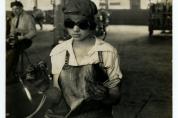 Photograph of a woman using an electric welder. Image from the Philadelphia War Photograph Committee collection documenting World War I participation on the Philadelphia home front. |
 A photograph of girls from the National Service and Emergency Aid division inspecting "comfort kits" at 1210 Arch Street. Comfort kits contained personal hygiene items such as games, soxs, buttons, soap, etc., and given to soldiers on the front line. |
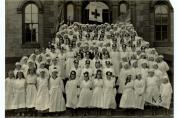 Photograph of the Auxiliary 123 at the Philadelphia High School for Girls at 7th and Spring Garden Streets. The photo is from the American National Red Cross from the Philadelphia War Photograph Committee collection documenting World War I participation on the Philadelphia home front. |
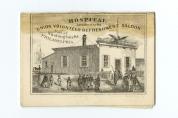 Pamphlet issued in 1863 by the Union Volunteer Refreshment Saloon. Includes list of U.S. Army hospitals in Philadelphia and places of interest in the city. |
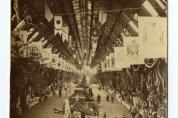 View of the main corridor of the U.S. Great Central Sanitary Fair. |
 View of Philadelphia Volunteer Refreshment Saloons. Lithograph by J. Queen, printed in colors by T. Sinclair and published by Job T. Williams, circa 1867. |
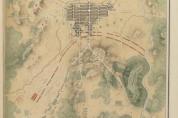 Capt. William Willcox's Map of the Battle of Gettysburg, created in 1863. |
 Theodore Ditterline Map of the Battle of Gettysburg, created in 1863. |
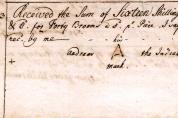 The receipt reads: Sept....3 Received the Sum of Sixteen Shilings &8 for Forty Brooms @ 5 p. Piece. |
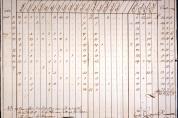 This ledger lists pelts, or animal skins, traded by Indians at Fort Pitt in 1764. The list of animals listed across the top of the ledger is representative of the types of peltry exchanged during this period. Note the large number of beaver and raccoon. In general, such pelts were traded in exchange for finished goods, such as tools and clothing. |
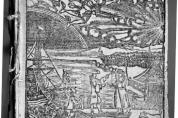 A page from a calendar printed in America in 1757 by Christopher Saur for the German-speaking populace. Used as the frontispiece of a book, 1770. |
- ‹ previous
- 15 of 22
- next ›